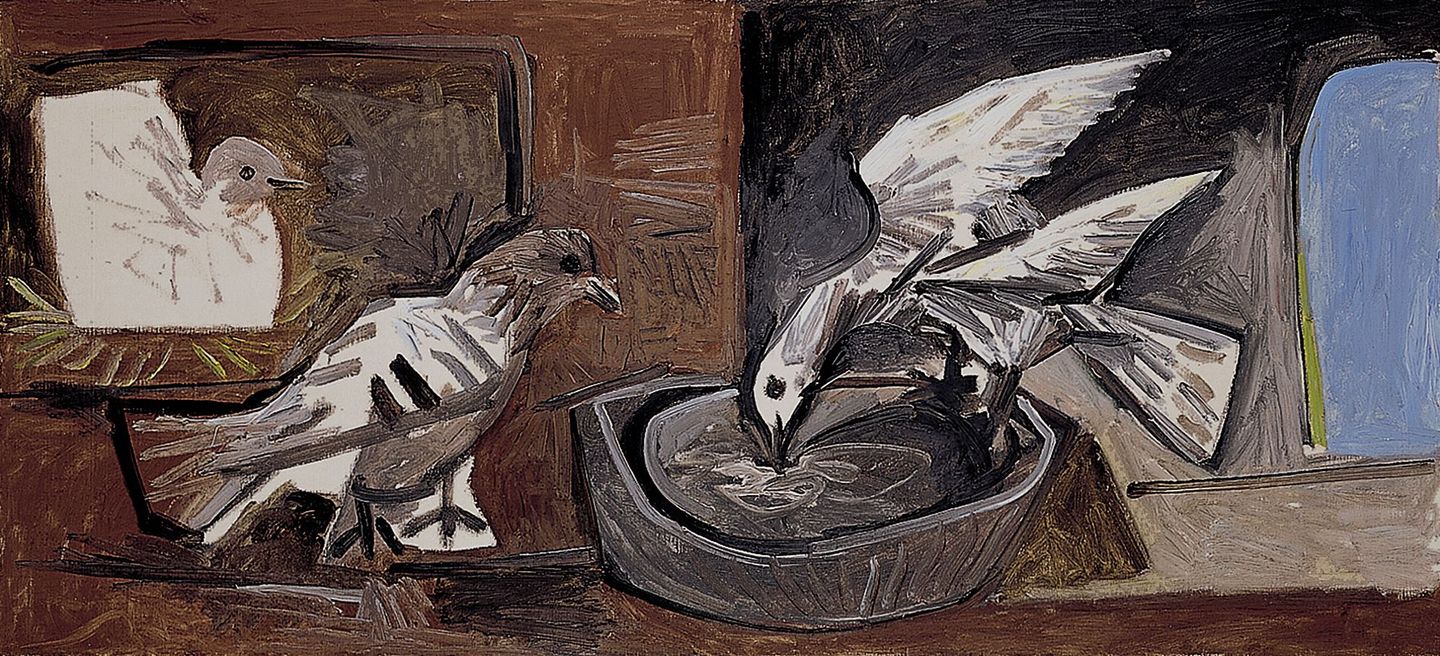
Not on view
Three Doves
Cannes, November 18, 1960
Oil on canvas
49,5 x 107,5 cm
Museo Picasso Málaga. Gift of Christine Ruiz-Picasso. MPM1.11
Picasso loved animals of all kinds. His particular bestiary consisted of birds – doves, roosters and owls – as well as dogs, cats, bulls, horses and goats, all of which appear repeatedly in his works. He also subjected these creatures to constant metamorphoses, giving them symbolic meanings.
‘Picasso may love or hate men, but he adores all animals […]. At the Bateau-Lavoir, he had three Siamese cats, a dog, a female monkey, and a tortoise; a tame white mouse lived in a table drawer. […] In Vallauris he had a she-goat; in Cannes, a monkey. As for dogs, not for one day has he been without their company. […] If it had been up to him, he would always have surrounded himself with a regular Noah’s ark.’
[Brassaï, Conversations with Picasso, Chicago, University of Chicago Press, 2002, p. 266]

Learn more
What was happening in 1960?
- Picasso continues to create works inspired by Édouard Manet’s ‘Déjeuner sur l’herbe'
- Three iconic films are released: Alfred Hitchcock’s ‘Psycho’, Federico Fellini’s ‘La Dolce Vita’, and Stanley Kubrick’s ‘Spartacus’
- Democratic candidate John F. Kennedy wins the US presidential elections
- The ‘Year of Africa’: seventeen African countries declare independence from Europe